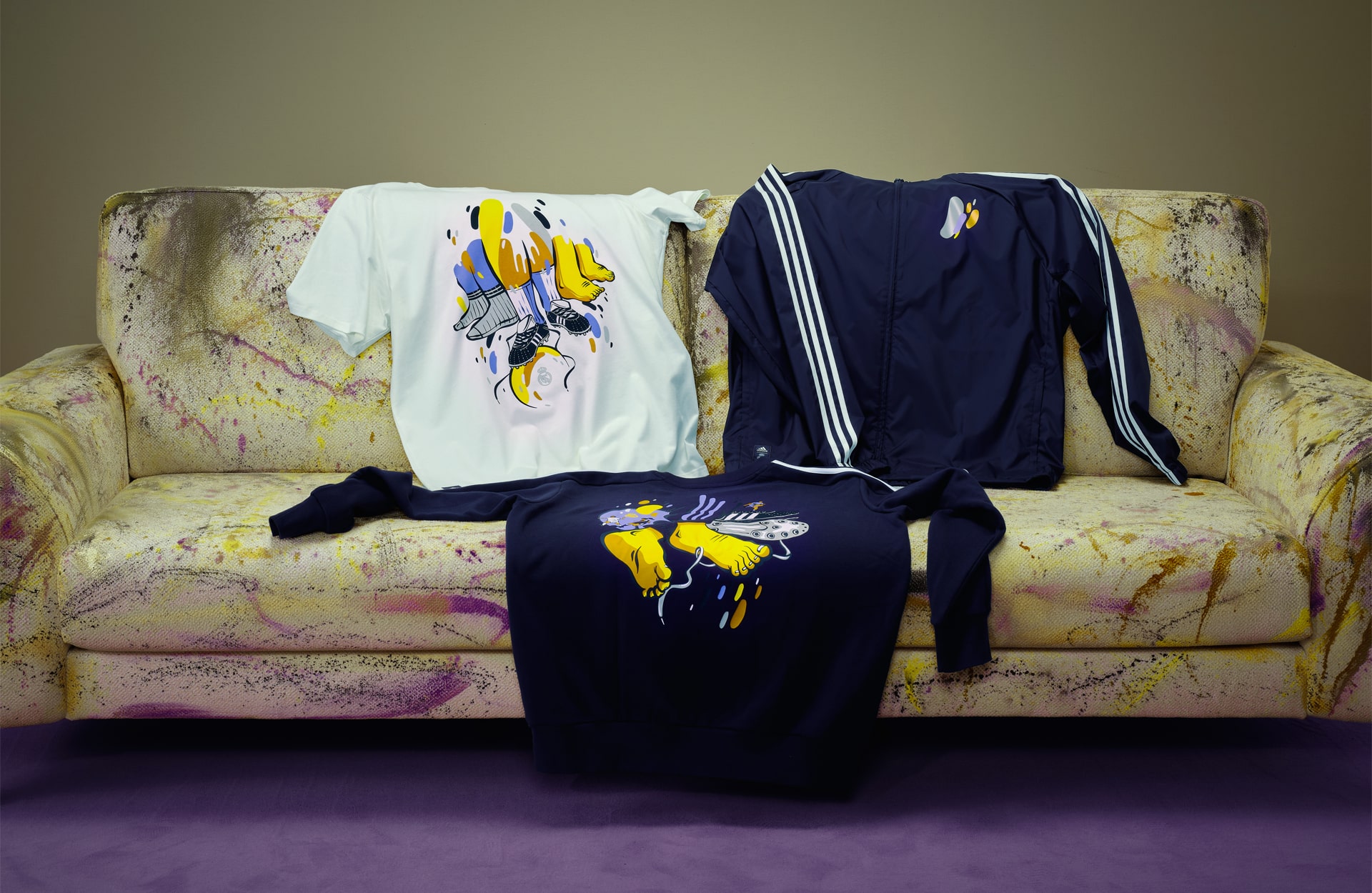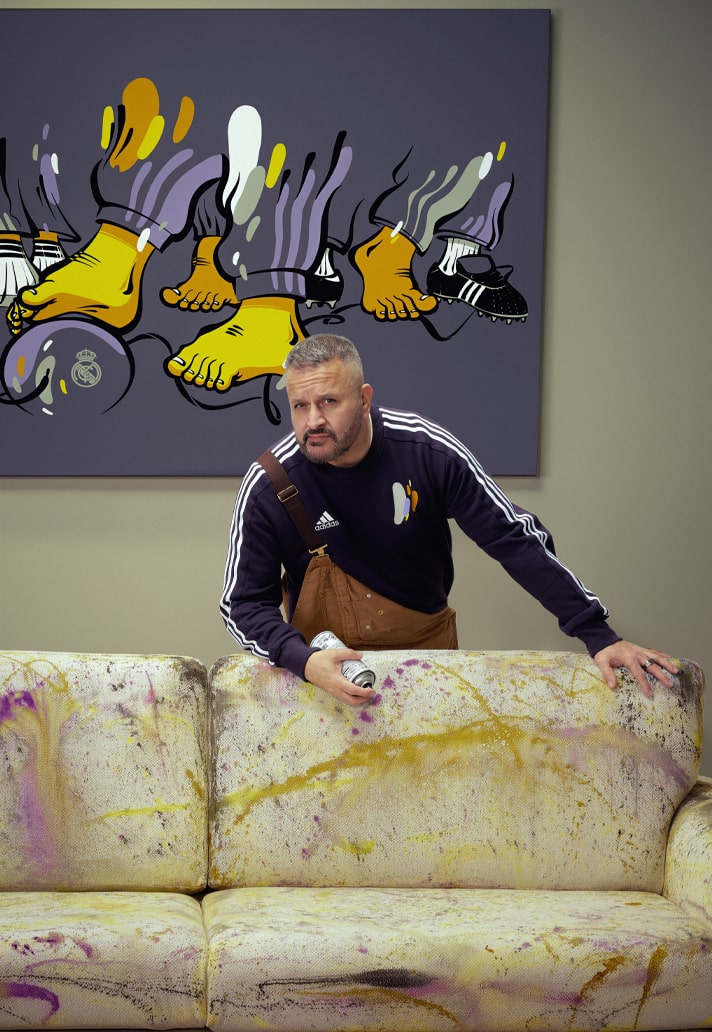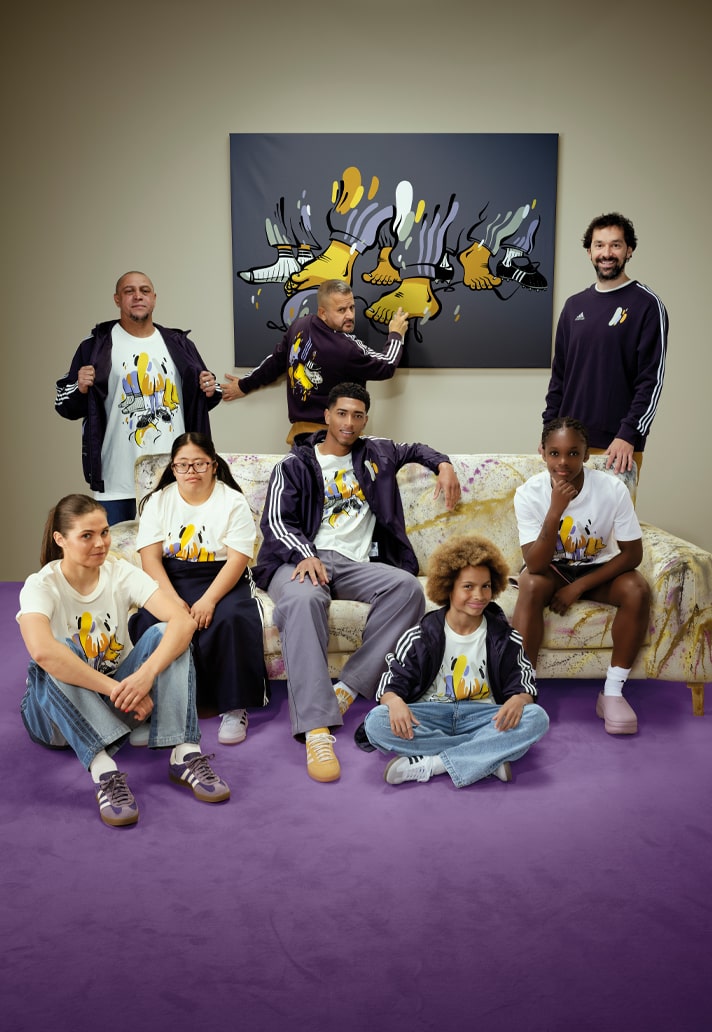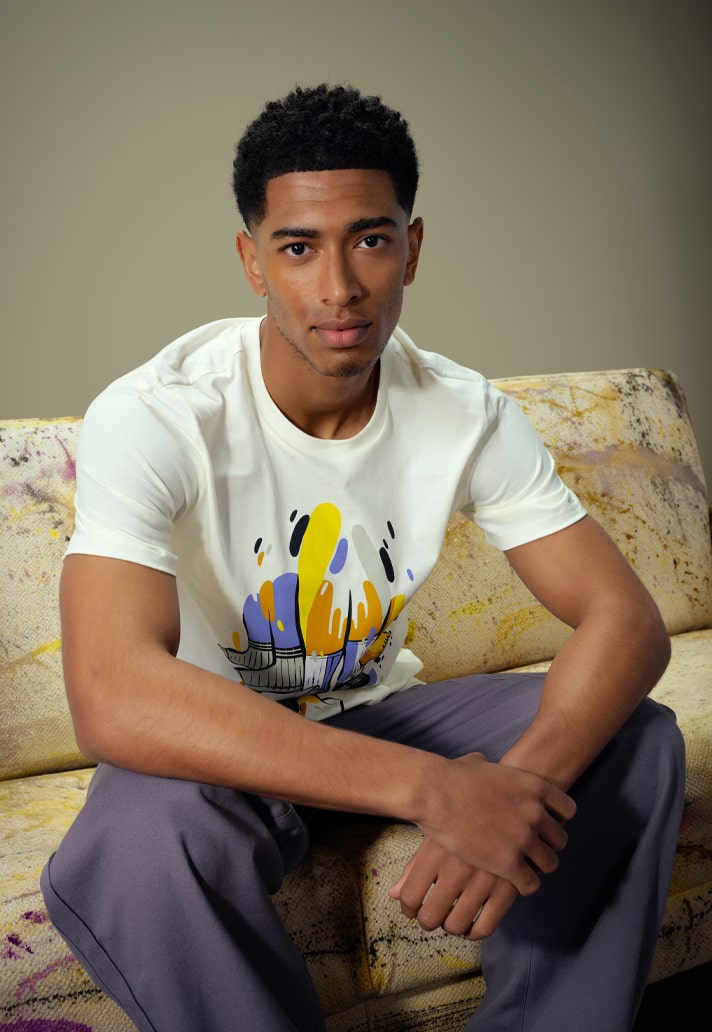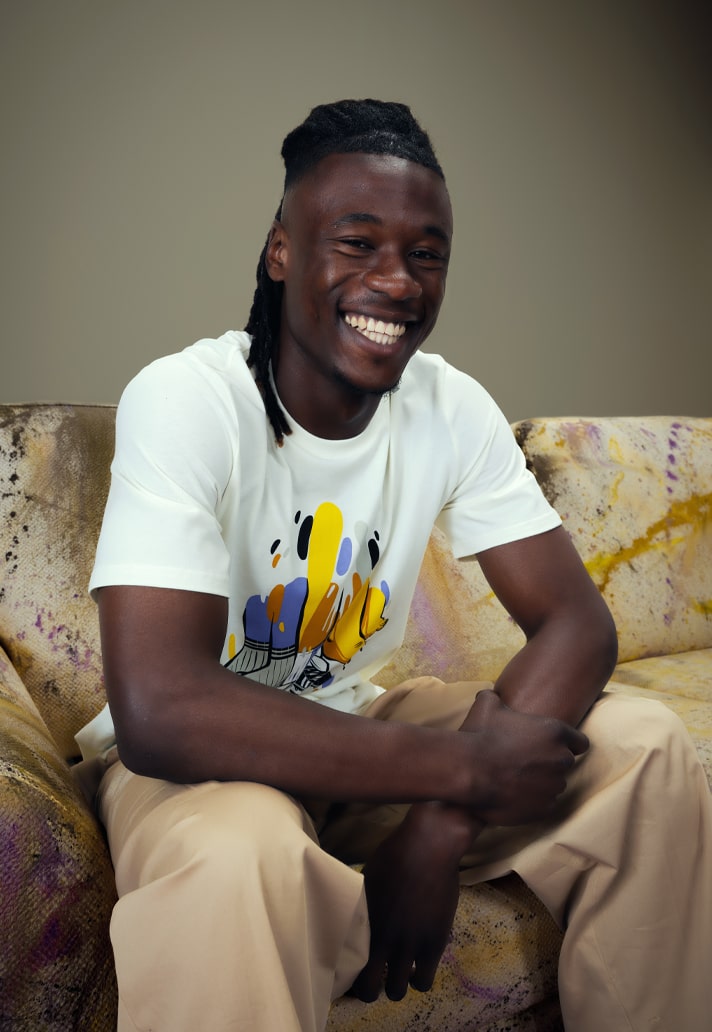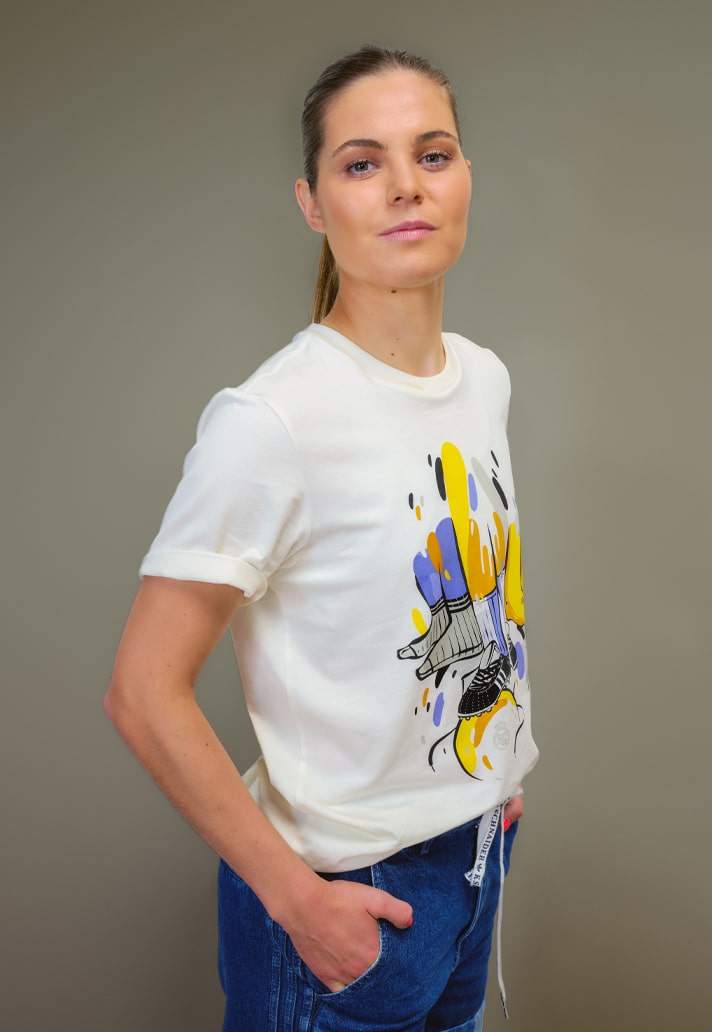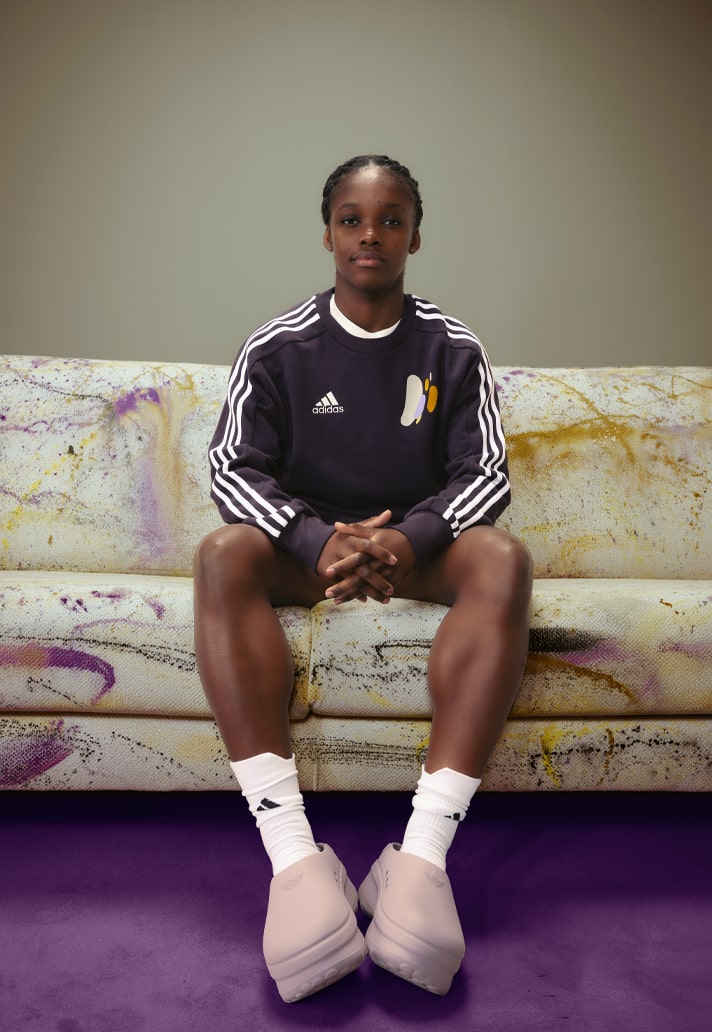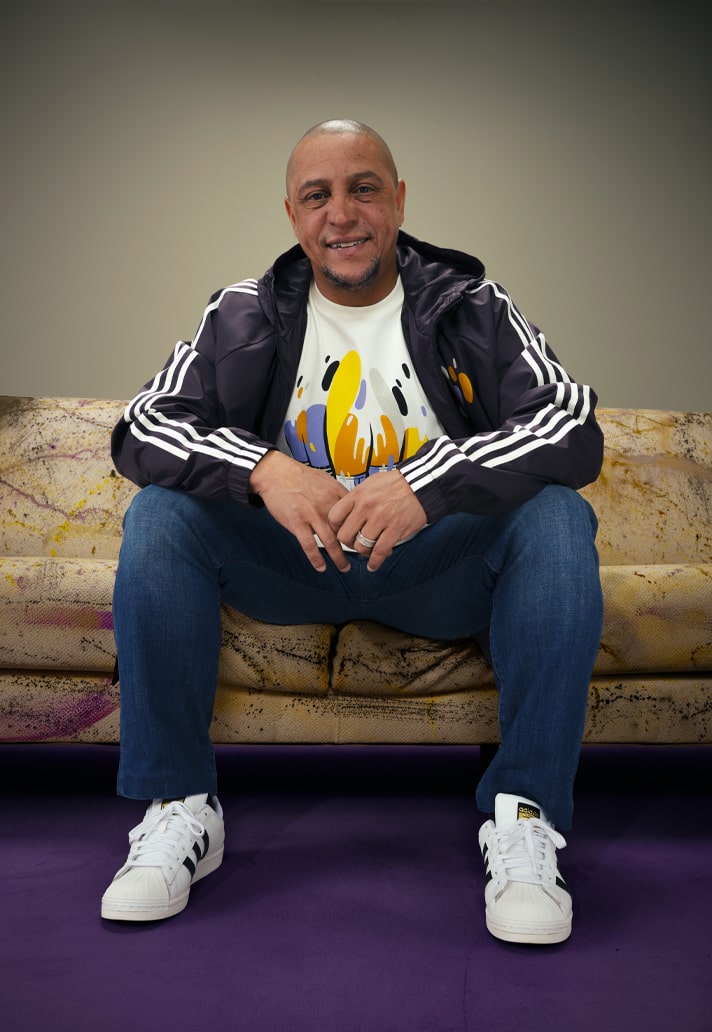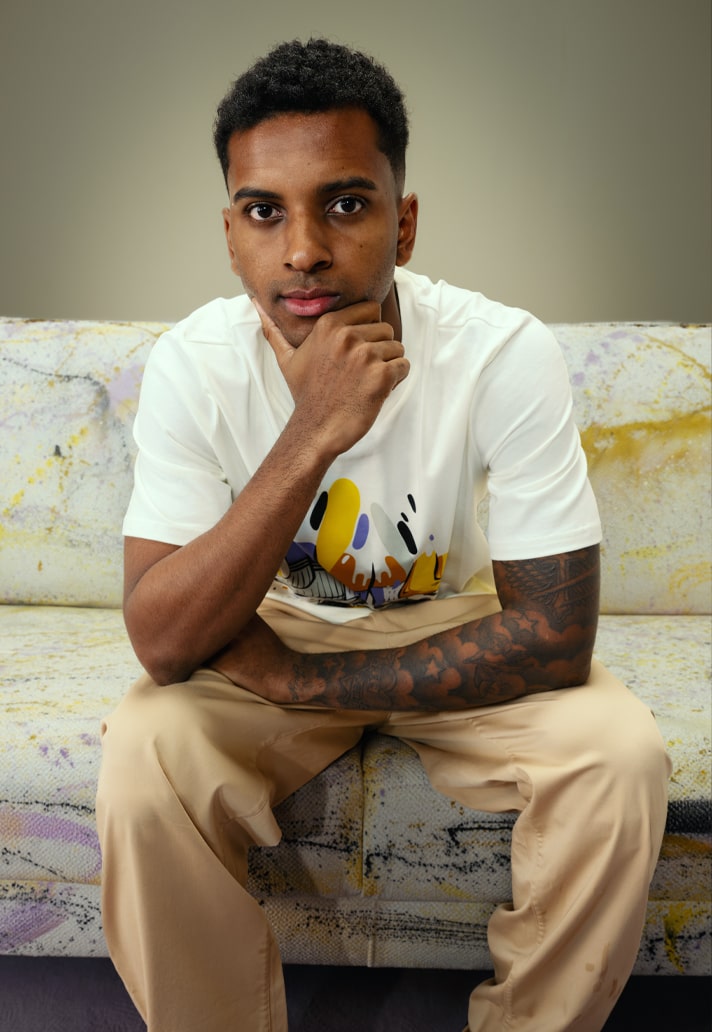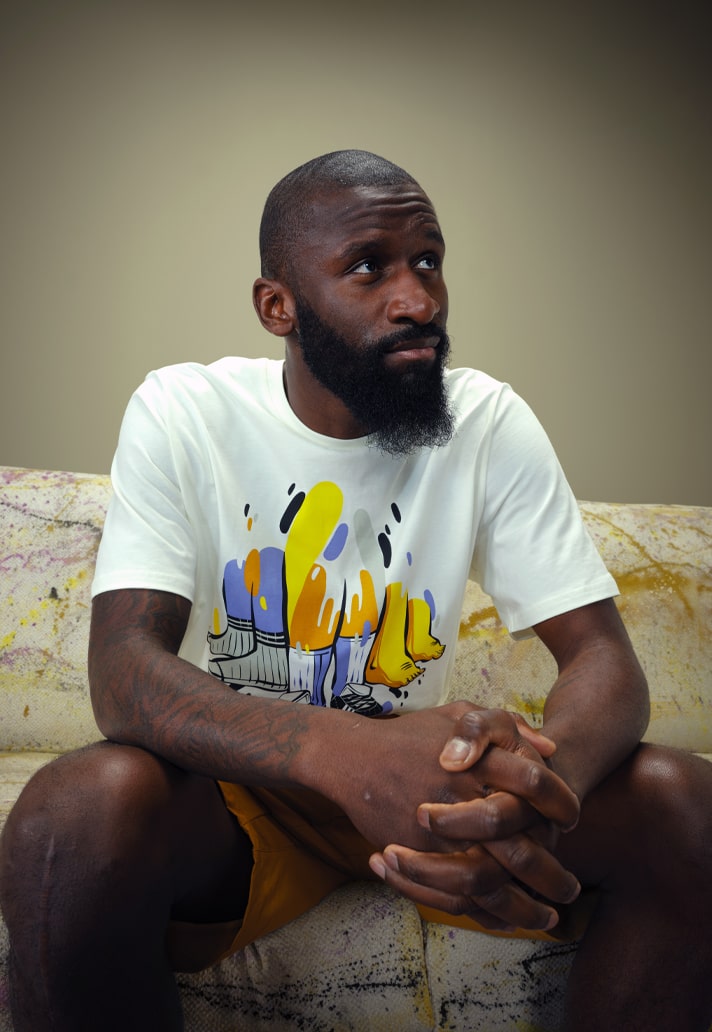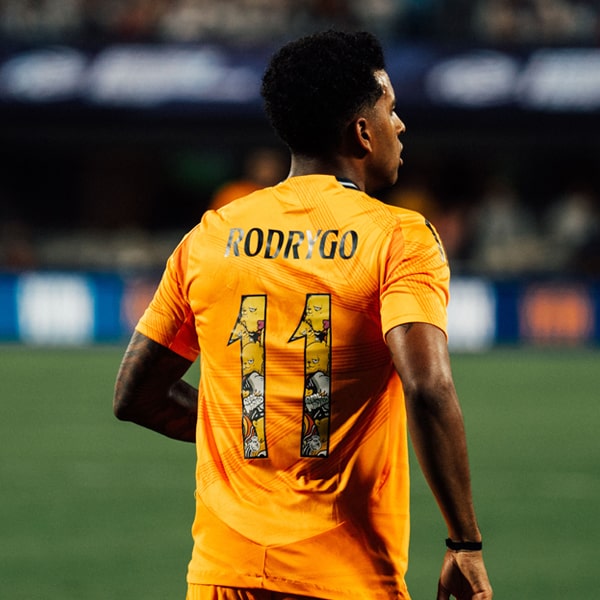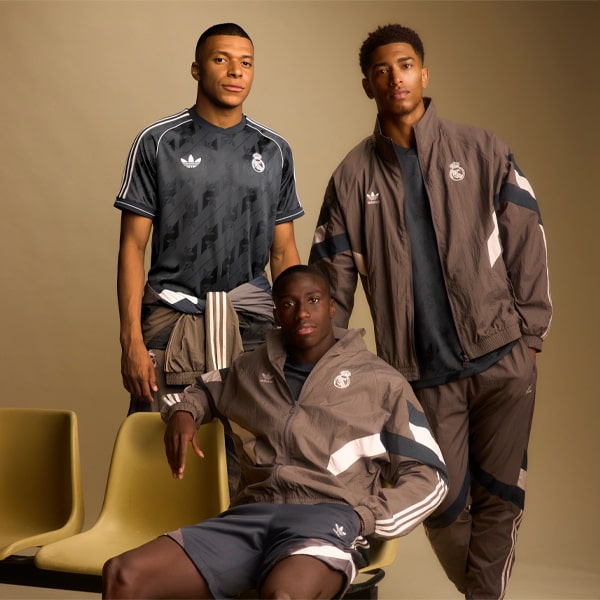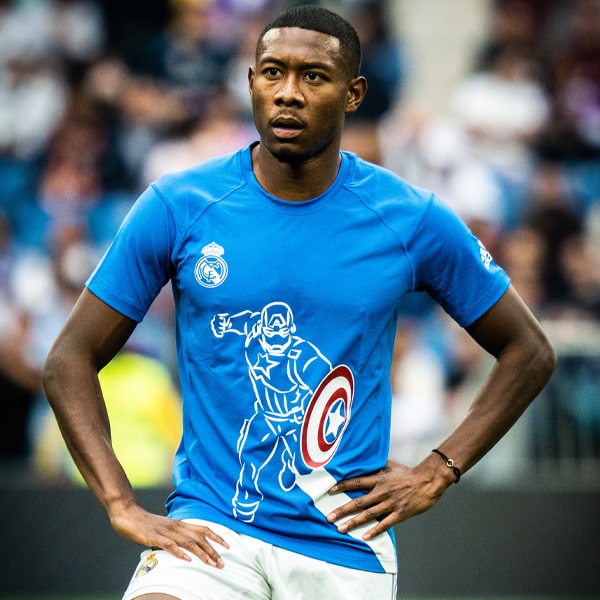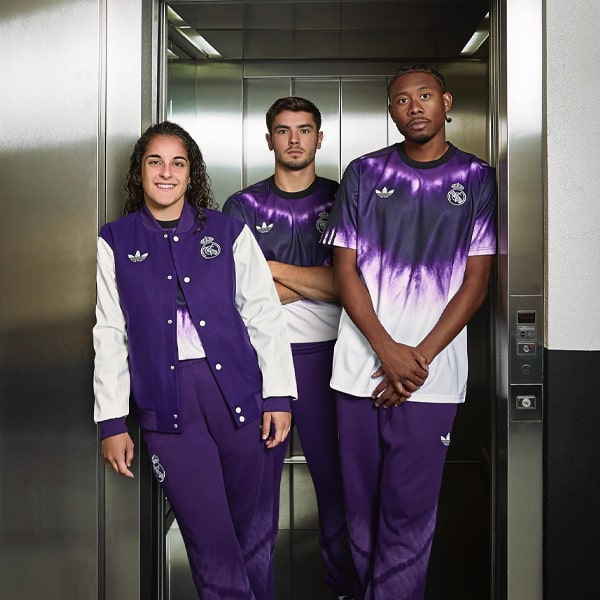In collaboration with Fundación Real Madrid, adidas has unveiled “Artist Pack”, a new collection of apparel designed by graffiti legend Zeta 1970 that celebrates the intersection between art, sport and social inclusion, and we spoke to the artist to find out more.
The “Artist Pack” is more than a fashion collection; it’s an initiative developed by adidas that aims to use the powerful connection between urban culture and football to promote the social work of Real Madrid Foundation around the world. It started out in 2023, when adidas linked Real Madrid with artists such as N_E_W_S (Mexico) or SEN2 (New York), carrying out activations with them in their cities of origin. Both artists painted an original artwork, inspired by the social-educational projects of the Real Madrid Foundation. This was recently followed up by a collaboration with Chicago-based contemporary artist JC Rivera, who created bespoke number designs for the La Liga side’s preseason clash against Chelsea.
Now, Artist Pack goes one step further, using the collaboration with Spanish artist Pablo Herraro, aka Zeta 1970 – whose works have been recognised as intangible heritage by the Community of Madrid – to create a new lifestyle collection.
Titled ‘put yourself in their shoes’, the work represents the way to avoid discrimination in football. “This design symbolises integration,” Zeta commented. “ It presents bare feet, with socks and with boots, which represents different segments on a social level, including both those who have resources and those who don't; all those differences and layers that exist in a society. Also, there are different shades of feet to talk about skin colours, we shouldn't forget that the foot is a resource that I use a lot because it's a very expressive element and it was a perfect fit.”
His original work of art uses football as a symbol of unity between diverse communities, promoting a clear message: on the pitch, there is no place for discrimination based on gender, religion, culture and social status.
First of all, tell us about Zeta, both as an artist and as a person?
I was born in Zamora and grew up in a peripheral city in the south of Madrid. From a very young age I had talent and an artistic leaning, and it was in the 80s, through graffiti that I started painting on the walls of my neighbourhood. As I grew up my work expanded my art and through this I achieved international recognition.
What’s your relationship with football, and growing up and living in Madrid, how much is football a part of life?
As a boy from the peripheral neighbourhood of Madrid, football is a neighbourhood culture; it’s the vehicle that makes you generate your social fabric. In my first memories as a child, football has always been there. Then, as you grow up into a teenager football is how you relate – you make your first gangs of friends, and thanks to football you meet people from other neighbourhoods. It really brings people together.
Being from Madrid, I remember when I was very young, having been a fan of the local team in my neighbourhood – I even got to play as a defender in Alcorcón B – but it was later that I became a Real fan.
Your work has been recognised as intangible heritage by the Community of Madrid. How does that make you feel?
It’s a milestone that I would never have imagined, much less being part of the cultural heritage of your country. I think that with our effort, it’s a before and after scenario – to get the recognition of other Graffiti artists, since it’s a collective movement.
How did this project come about for you?
After having participated in campaigns with adidas and the club previously, I had the opportunity to travel to Mexico with the foundation and to see the essential work they do, and that's where the idea for this collaboration "Ponte en sus pies" came from.
Was there any hesitation in taking on this project for you?
There were no doubts. It fit easily since it’s one of the values of the Real Madrid foundation "Integration through football". We did have to think about the approach to make it fit in terms of design, composition, range of colours, to be related to the colours of the "Away2023-24" shirt.
There’s obviously a powerful message centered around discrimination and inclusion behind the collection, so tell us how this is portrayed in the designs?
Indeed, the design speaks of integration. If you look closely, the feet have different shades and that speaks of races. Similarly, some are barefoot, others with socks, others with boots and these differences speak of the different social backgrounds of people all over the world.
Is there anymore you can tell us about the inspirations behind the designs? For example, why did you choose to focus on feet?
[Laughs] First of all I’d like to point out that I'm not a fetishist! I think there’s something very gestural and identitarian about it all. You just have to think of a photo of a barefoot child in Africa without resources, or the extravagance of someone with luxury shoes... feet really do speak of the character of a person.
What considerations did you have to make when thinking about how your grafitti style would look on clothing?
When you apply your art to other merchandising media, gallery works, etc., although it has to have your essence, you always try to make it an attractive design, as well as making it fit with the values of the campaign and brand. You then have to think about how it will look finally, which technically gives a good result. In my case as I work with flat colors it was easier to carry to printing and screen printing techniques for textiles.
How does it make you feel seeing club legends and current players wearing this collection, particularly alongside such a diverse mix of supporting cast, reinforcing the message behind the campaign? It must make you proud…
Wow, yeah, very proud! Family members who are no longer with me or people who love you come to mind, the feeling of affection and pride towards me, for achieving this milestone.
This project is a great representation of the influence of what we call Creative Soccer Culture (the relationship between football and a variety of creative fields, including art, fashion, film, music, photography, and product design). How important do you think this side to football is?
It’s really important. Football and graffiti actually share a lot of similarities and go hand-in-hand in that they are a connecting thread in a neighbourhood. We all have varied interests and backgrounds, but we all come together with a shared vision.
What does the rest of 2024 look like for you, and do you have anything exciting planned for 2025?
The rest of the year is a time of reflection and sitting down to develop future projects, I have some graffiti events and commissions for clients, on the other hand I am curating and developing a museum project, anthological about the Graffiti of my city, to support and give visibility to other artists who left their grain of sand in this culture, and a periodical publication specialised in Graffiti.
Shop the Real Madrid Artist Pack collection now at shop.realmadrid.com
